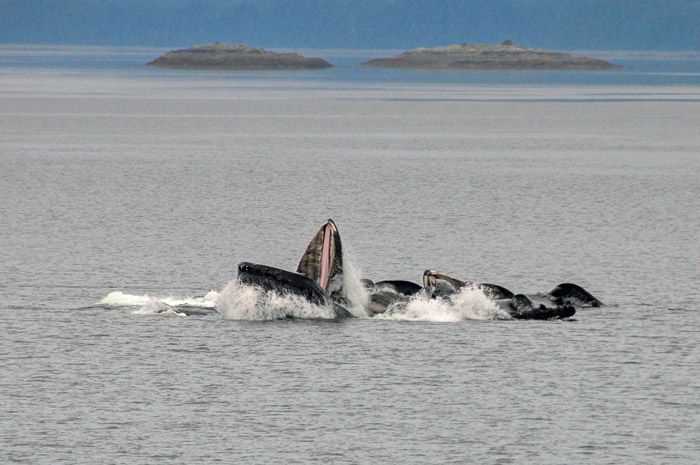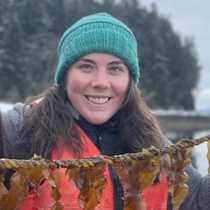Travel through Southeast Alaska is always an adventure. We never know what to expect between weather, wildlife, and maritime conditions. This morning broke hazy and gray. Dense banks of fog drifted across mirror-calm waters. Ripples from strong currents created mesmerizing and confusing patterns in the flat light. Humpback whales surfaced, their misted breaths adding to the gray world in great sighs, before disappearing back into the miasma of gray.
Shortly after breakfast the fog began to lift, burned away by the sun breaking through the clouds. Briefings and orientations were put on hold when we spotted a group of cooperatively feeding humpback whales. A group of seven adult humpback whales worked together using their bodies, voices, and bubbles to herd a huge school of herring to the surface, culminating in the mouths and faces of the whales breaking the surface simultaneously. This feeding behavior is unique to Southeast Alaska, and only practiced by 60 or so individuals out of a northern Pacific population of 20,000 whales. These individuals have no genetic link to one another and yet somehow come together in a complex dance with specific repeated roles, year after year, to work together and feed on herring. We watched in awe as they completed set after set of successful bubble nets. After half an hour we left them to their feeding before continuing on.
Lunch saw the skies shifting from breaking clouds to bouts of hot clear sun. Layers of clothing were shed as we headed to shore for excursions. Groups headed into woods to explore the Tongass National Forest while others ventured onto the placid waters of Sitkoh Bay via kayaks or standup paddleboards. The ancient forests of Sitka spruce and western hemlock rose around us, monuments to a landscape nearly lost to development and logging. We returned to National Geographic Quest this afternoon enamored with the beauty of Southeast Alaska and eager for the unknown adventures that await us.







